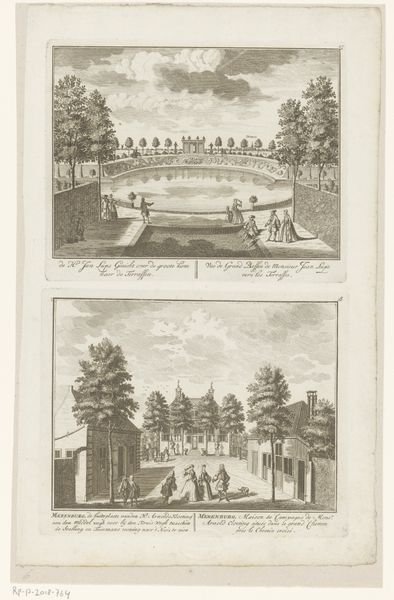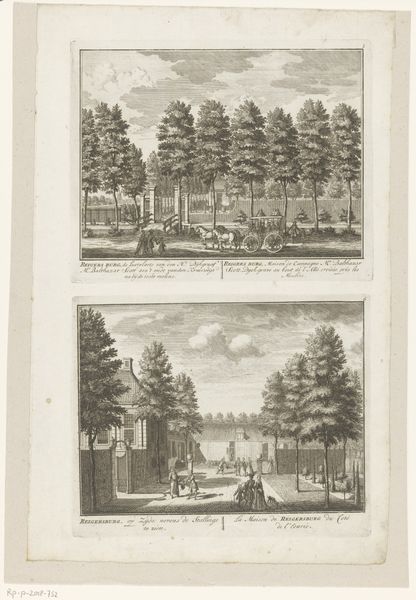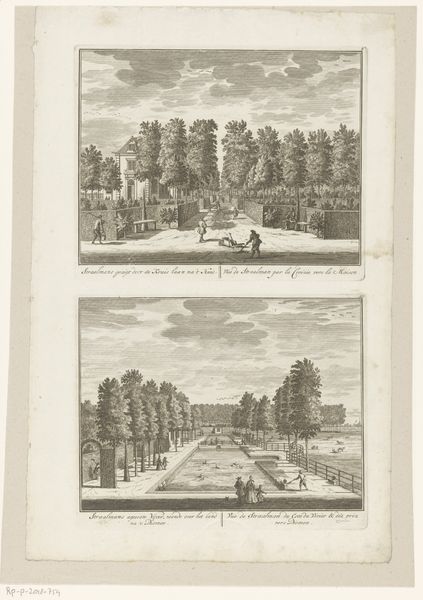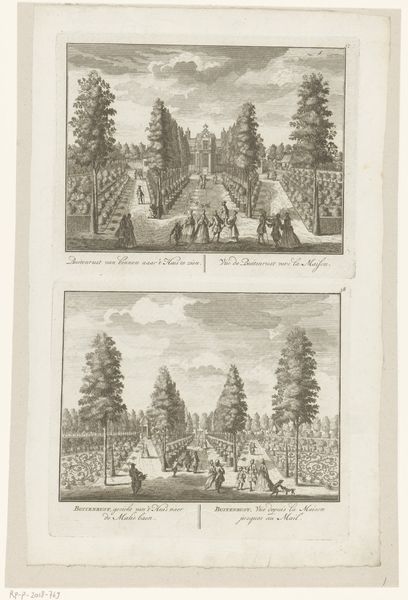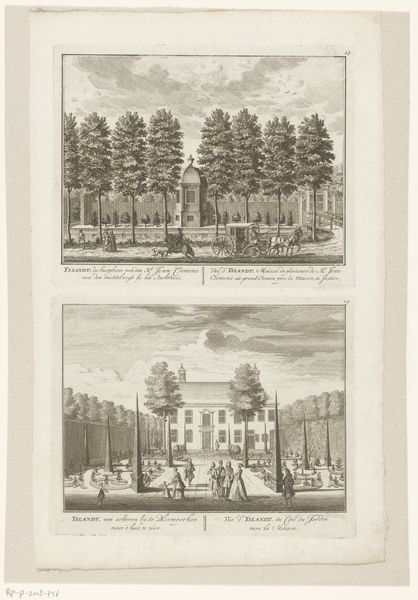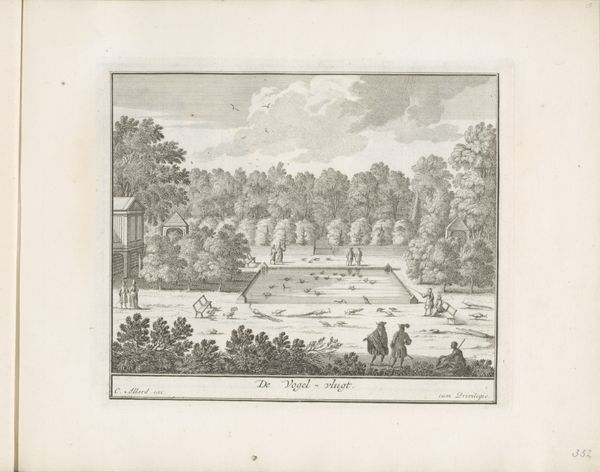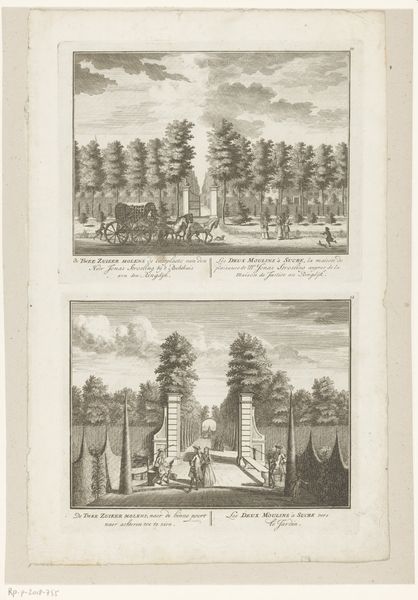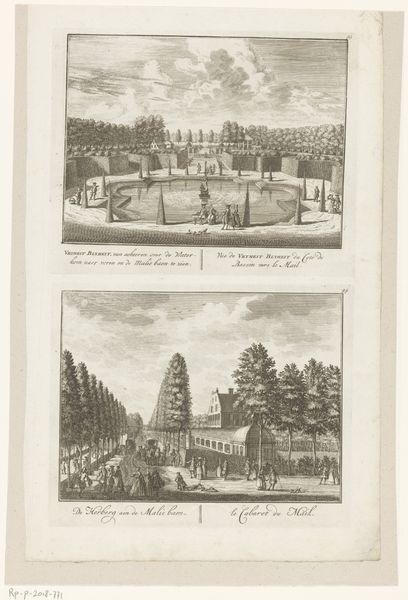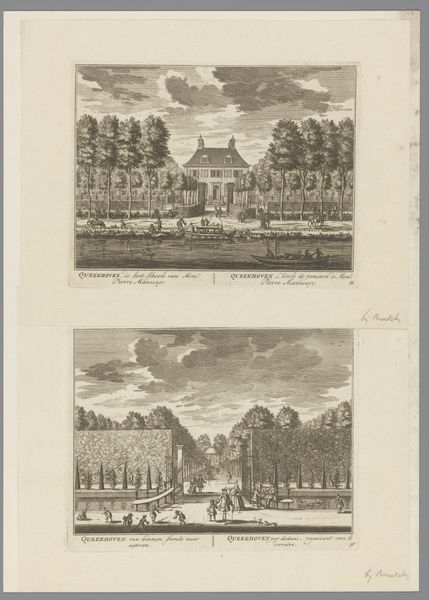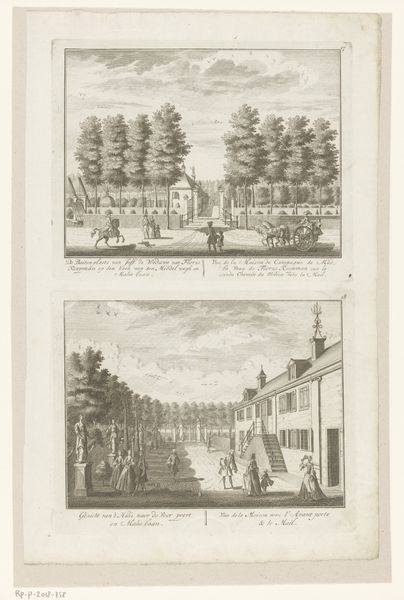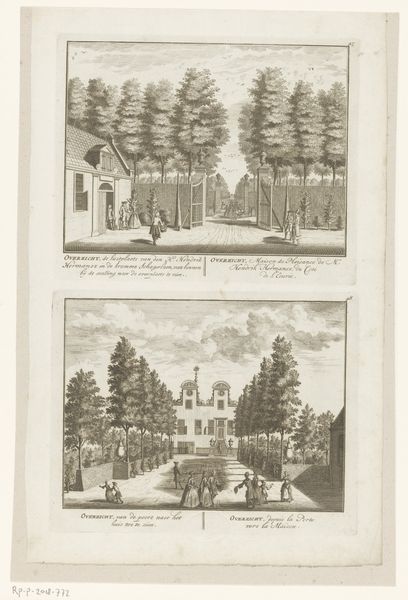
Gezicht op buitenplaats Vrijheid Blijheid en gezicht op de tuinen van buitenplaats Vrijheid Blijheid 1725 - 1768
0:00
0:00
anonymous
Rijksmuseum
print, engraving
#
baroque
#
dutch-golden-age
# print
#
old engraving style
#
landscape
#
cityscape
#
engraving
Dimensions: height 170 mm, width 213 mm, height 169 mm, width 211 mm
Copyright: Rijks Museum: Open Domain
Curator: This engraving, whose authorship is unfortunately anonymous, is entitled "Gezicht op buitenplaats Vrijheid Blijheid en gezicht op de tuinen van buitenplaats Vrijheid Blijheid" – or, "View of the Vrijheid Blijheid Estate and View of the Gardens of the Vrijheid Blijheid Estate." It dates from somewhere between 1725 and 1768. Editor: There's a real austerity to it, isn't there? Not at all what I expect from garden images. The lines are sharp, even severe; it presents a sort of ordered domain. It looks like leisure and labor perfectly in place. Curator: Absolutely. And understanding that relationship between labor and leisure is key to interpreting the print. This estate would have been maintained through considerable human toil, mostly that of enslaved people. This print normalizes colonial trade. Editor: Right. And the meticulous rendering itself speaks to a whole economy of materials. What type of paper was it, who made the inks, how skilled was the engraver in the relationship with their tools? I am thinking of these estates and imagining who might have the privilege to look at images like this. What material function did they serve for these families? Curator: Exactly, this wasn’t a universal image, this was circulated within specific social and economic circles. It served to reinforce class divisions. Looking closely at the gardens, you can see how the formal arrangements – the meticulously shaped hedges, the symmetrical plantings – express power and control. It shows the wealth and aesthetic sensibilities of its owner, solidifying their position within the colonial hierarchy. The perspective subtly centers the estate owner, projecting both status and dominance. Editor: You made me rethink my earlier impression, and this gets to that austerity. We cannot consider the clean lines of the fountains, or the perfect topiary outside a broader consideration of the material wealth—acquired by forced labor—that allowed its construction and maintenance. The precision represents, materially, something that is built upon inequality and exploitation. Curator: Indeed. What we see isn't just an image of pleasure; it's a carefully constructed performance. The artist emphasizes order, but what that implies is a whole host of enforced social orders predicated on control, hierarchy, and racial inequity. This piece makes me contemplate our collective responsibility. To address historical injustices, it begins by unpacking the values embedded in these representations. Editor: It pushes me to consider the materiality of image making at the time and what they reveal. Images always require power dynamics to produce and distribute. And what gets lost when an image, seemingly harmless, serves as an apparatus to erase entire groups of people?
Comments
No comments
Be the first to comment and join the conversation on the ultimate creative platform.
